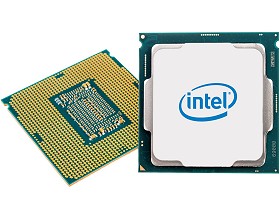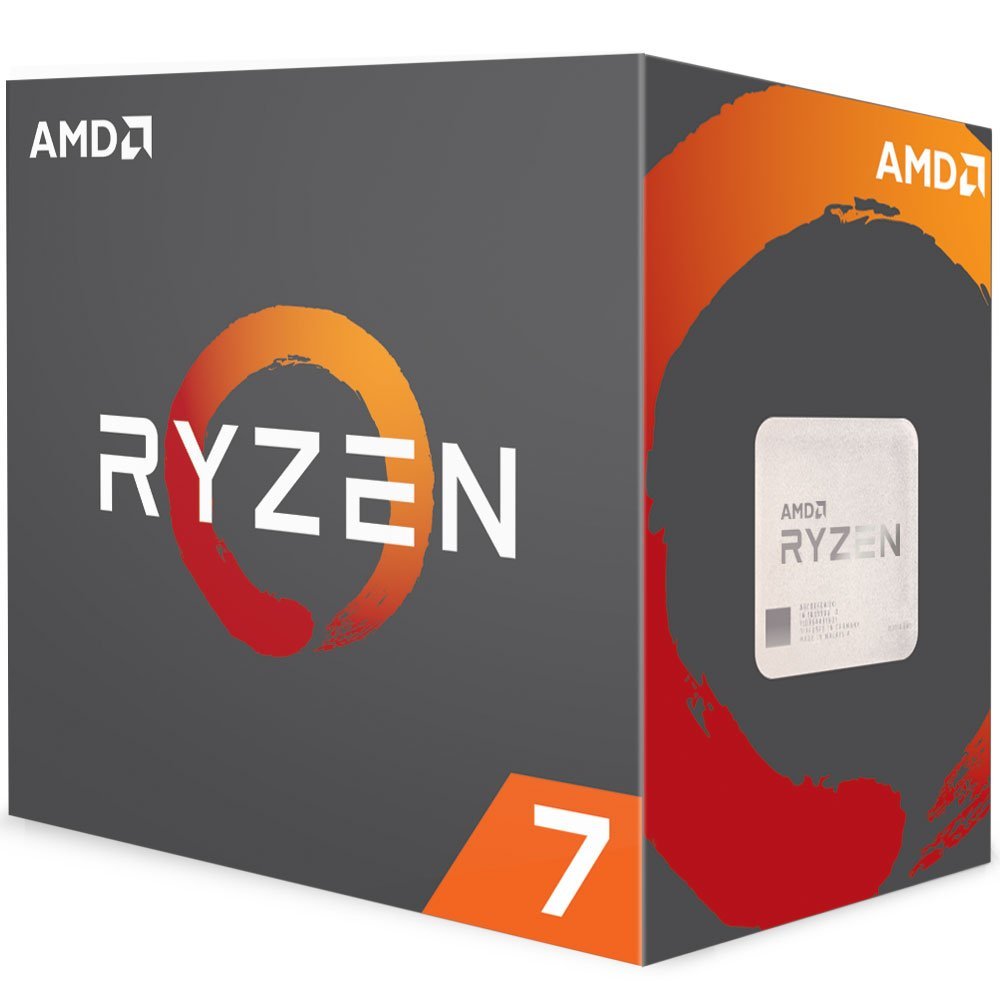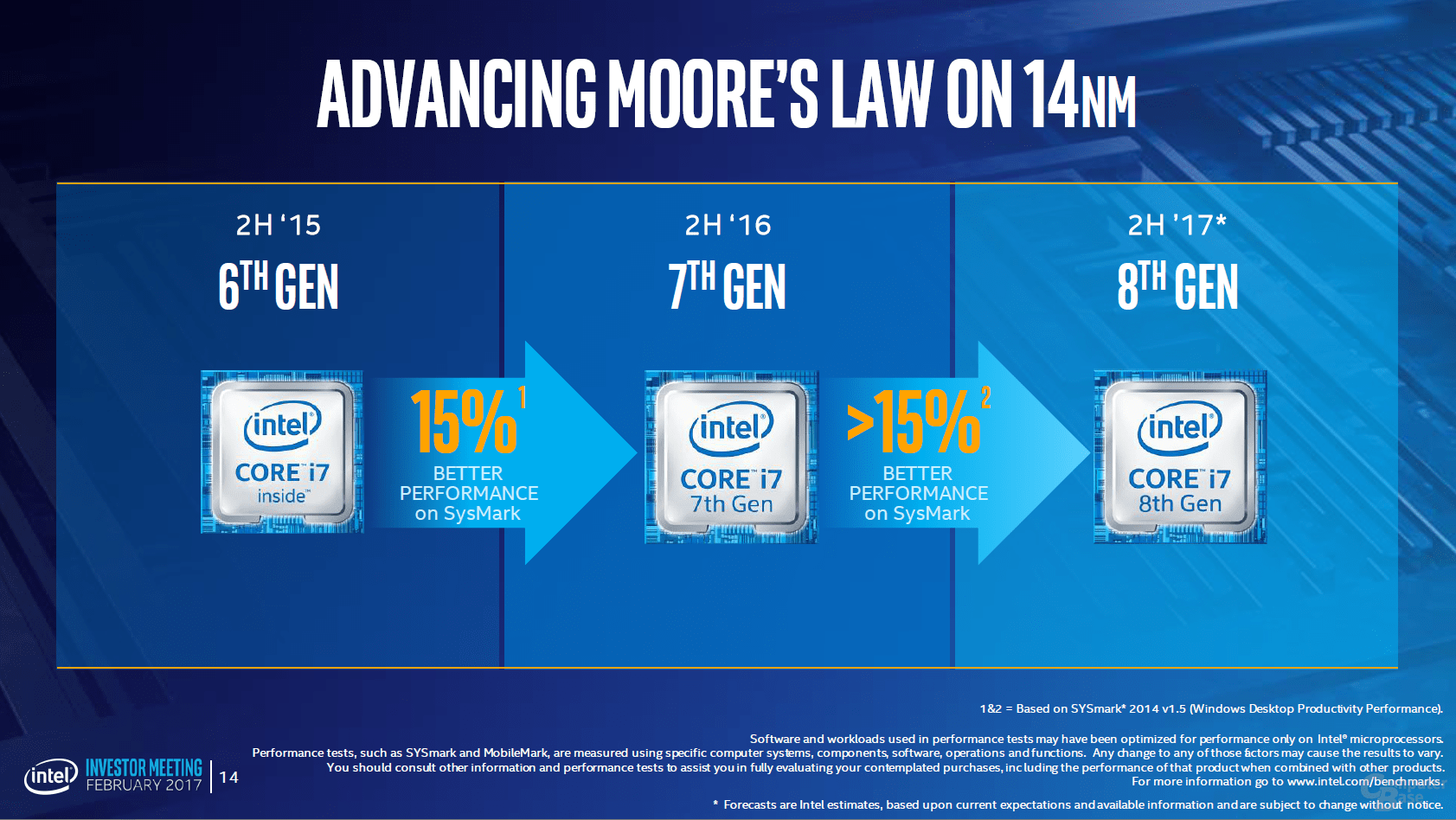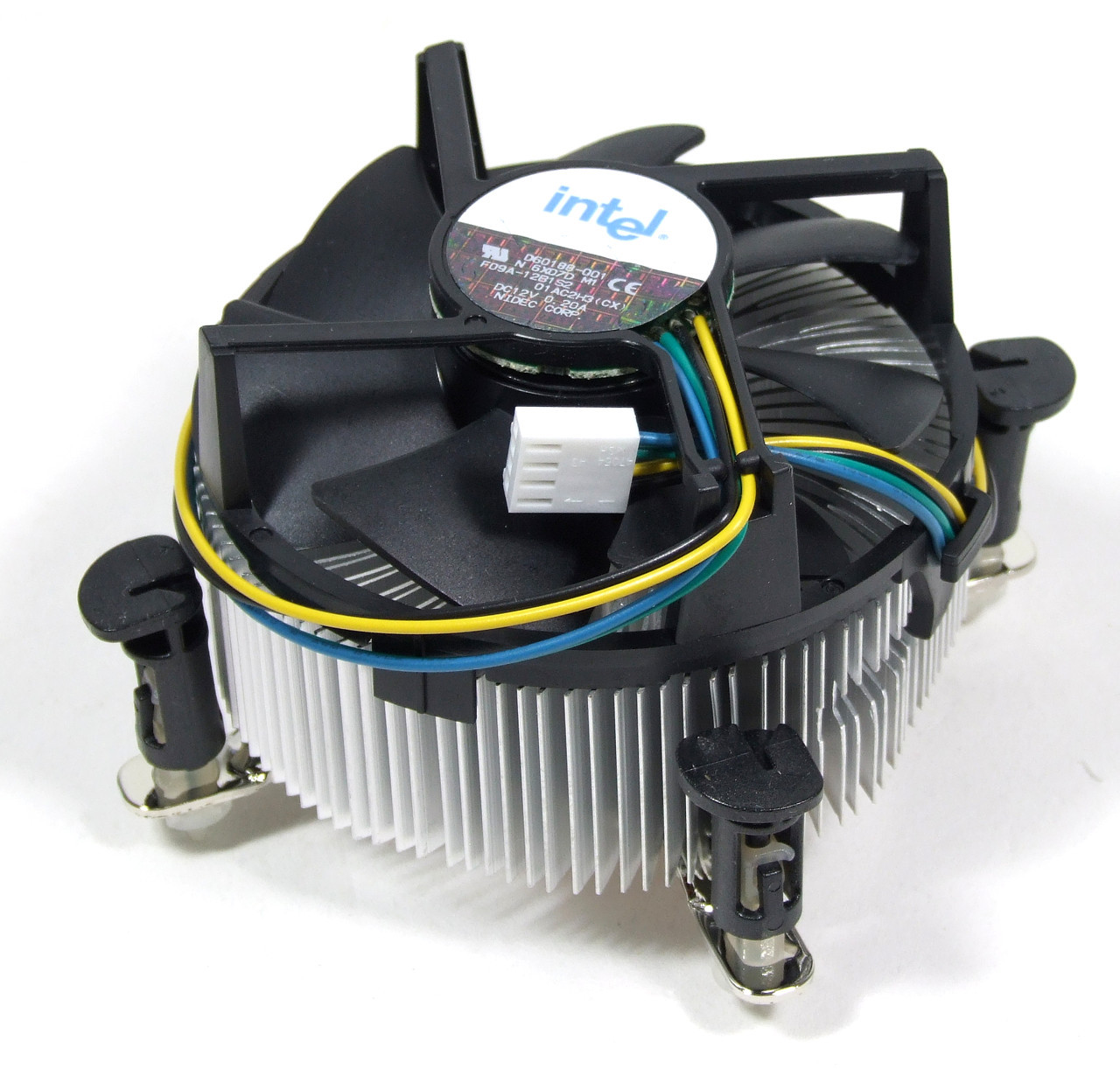Intel’s Core i7-9700K: What We Know (And How It Could Beat AMD)

It’s a tough time to be a PC builder or gamer. Graphics-card prices are astronomical, RAM sits in a similar celestial orbit, and HTC’s new Vive Pro VR headset will set you back $1,200 if you don’t have an existing set of sensors and accessories for HT's previous-generation headset. If you want to play on the leading edge, or anywhere close to it, it will cost you.
Indeed, from the PC-component perspective, about the only thing working in favor of increased performance and affordability at the moment is the CPU market.
The Lay of the CPU Land

The launch of AMD’s Ryzen chips last year, which brought eight-core CPUs into the mainstream for the first time, was followed later by Intel’s six-core Core i7-8700K. All of a sudden, the number of cores and threads available for your computing dollar was never better.
And that ratio may get better still—AMD’s next-generation Ryzen chips are expected to arrive in April. Leaked reviews of the AMD Ryzen 7 2700X and Ryzen 5 2600 seem to indicate that they are a decent upgrade over the initial Ryzen chips from 2017—especially when it comes to the latency issues that plagued last year’s Ryzen chips in some games.
What’s Intel’s Next CPU Step?
With new Ryzen processors about to roll out, our interest--of course--turns to what Intel will offer up as a response, and as a replacement for chips like the Core i7-8700K. (That key "mainstream flagship" CPU debuted just about six months ago, in early October of 2017.) Let’s take a look at what we know (or at least what we think we know) about the putative Core i7-9700K, and what it will need to compete with AMD’s increasingly tough competition.
Multiple rumors and leaks strongly indicate that the ostensible Core i7-9700K will sport eight CPU cores and 16 threads, in contrast to the six cores and 12 threads on the Core i7-8700K. If this turns out to be true, it will be a first for Intel on a mainstream-grade CPU platform—as opposed to the enthusiast-targeted Core X-Series platform, which goes all the way up to 18 cores (if you can afford to drop a couple of grand on a CPU). But the eight cores on the Core i7-9700K, if that turns out to be accurate, only just matches what AMD has to offer in terms of cores and threads on its mainstream Ryzen CPUs; it doesn’t surpass the competition.
10 Nanometer (or Not)?

Of course, a shift to the long-promised 10nm process node would help Intel move further ahead of AMD without necessarily adding more cores. But that’s looking increasingly unlikely with Intel’s next round of desktop chips. Intel’s Gregory Bryant (senior vice president and general manager of the Client Computing Group) proclaimed at CES 2018, back in January, that 10nm chips were shipping to customers. But documents released weeks later seem to confirm that those 10nm “Cannon Lake” parts that shipped in 2017 were low-power, dual-core parts without integrated graphics. These aren’t the Cannon Lake chips that enthusiasts and gamers are looking for.
Stay On the Cutting Edge: Get the Tom's Hardware Newsletter
Get Tom's Hardware's best news and in-depth reviews, straight to your inbox.
In fact, it’s looking likely that the Core i7-9700K will be a so-called “Coffee Lake Refresh” chip built around Intel’s 14nm++ process. Why do we say that? For starters, we have heard persistent rumors and leaks around an upcoming Z390 chipset. Most recently, a listing for "motherboard-specific sensor info for MSI B360/H310/H370/Z390-Series," showed up in a recent AIDA64 update. (AIDA64 is a benchmark and diagnostic suite often used to test pre-release hardware.)
What a Chipset Tells Us
We now know that the other 300-series chipsets mentioned above are real—in fact, we’ve tested a few motherboards based on them. So there’s no reason to think that a Z390 chipset won’t arrive soon—at Computex 2018 in July, perhaps.
Now, the “3” in the Z390 name almost certainly indicates that the chipset is aimed at Coffee Lake CPUs, just like the other 300-series chipsets. What does that tell us? If Intel knew it was going to have 10nm "Cannon Lake" desktop chips ready sometime in 2018, it seems extremely unlikely—though certainly not out of the question—that the company would be launching yet another high-end chipset for its current-generation processors halfway through the year.
If we were placing bets, we’d put our chips (pun intended) on the likelihood that Z390 was designed specifically for a line of Coffee Lake Refresh chips, which would include the Core i7-9700K. Alternately, the Core i7-9700K could be a limited stop-gap between chip generations, just like the pair of "Devil’s Canyon" chips were back in 2014.
Can Intel Push Coffee Lake Higher?

Of course, even assuming all the above leaks and assumptions are true, there is quite a lot we still don’t know about Intel’s future mainstream flagship chip. This wikichip page has a fairly detailed spec list based on existing leaks and rumors. It may prove to be accurate, but it doesn’t say anything about clock speed—base clocks or turbo-boost rates. And if the Core i7-9700K is indeed a Coffee Lake chip that doesn't end up featuring architecture or major process-node changes, clock speed (plus core count) would tell us most of what we’d need to know about the performance of this upcoming chip.
That said, the Core i7-8700K already has a top Turbo Frequency (at stock settings) of 4.7GHz. It seems likely that, for Intel to set the new chip apart from its predecessor, the stock Turbo clocks would have to hit 5GHz or higher. If Intel can do that, while pushing up the base frequency to about 4GHz and keeping thermal demands in the same 95-watt range of the Core i7-8700K, that indeed would be impressive.
A Lot Comes Down to Pricing
Of course, we don’t know what Intel or AMD will charge yet for their next-generation CPUs. AMD has been extremely price-aggressive since the launch of Ryzen last year, often undercutting Intel’s comparable parts by a significant amount. With its finances now solidly in positive territory for the first time in years, AMD may continue to pressure Intel on chip prices. After all, the CPU underdog is making money and gaining market share with this strategy. So why change it?
But CPU prices aside, Intel also faces problems of affordability when it comes to the platform as a whole. AMD’s AM4 boards have been out for a year, and the company says that new CPUs will be backward-compatible with existing AM4 boards (after a BIOS update, of course). Intel’s chips, meanwhile, have not been backward-compatible with previous-generation boards in recent years. And on top of that, Team Blue only just released its lesser 300-series chipsets, after six months of essentially forcing consumers interested in 8th-Generation Core processors to overspend on motherboards—particularly upgraders and builders who don’t care about overclocking, Optane storage, or multiple-graphics-card setups.
Intel Has Options

So, where does Intel stand in the desktop CPU space with next-generation chips like the Core i7-9700K, and what does it need to do to gain ground on its newly resurgent competitor?
Offering more cores for less money would be a good start. That seems unlikely in the short term. Offering up more-affordable motherboards that work with more than one processor generation wouldn’t hurt, either. Both tactics seem to be working for AMD, and Intel clearly has the coffers to cut its margins thinner than AMD can.
Another interesting option for Intel to compete in today’s world of ever-overpriced graphics cards would be a socketed version of the "Kaby Lake-G" CPU that we just tested in the Intel NUC 8 VR. A custom build around a Kaby Lake-G chip would allow many users to game without the added expense of a graphics card, as well as making truly compact mainstream gaming systems more viable than they have been in the past. Given the rise of titles like Fortnite and Overwatch—which aren’t that graphically demanding—the market could be ripe for just that kind of system. And Intel clearly has some kind of designs on the GPU market, as evidenced by the company’s hire of AMD’s Raja Koduri late last year.
But while Koduri is certainly an interesting hire, a socketed Kaby Lake-G is extremely unlikely, given that AMD makes the Vega graphics in those chips. It was surprising to see AMD selling Intel its graphics silicon for comparatively low-volume products such as the new Intel NUC and high-end convertibles like the Dell XPS 15 Convertible. But we highly doubt that AMD is desperate enough to cut into its own core desktop-CPU and graphics businesses by helping Intel compete against itself and its own socketed graphics-equipped products, like the "Raven Ridge" AMD Ryzen 5 2400G.
After a rough start with the Mattel Aquarius as a child, Matt built his first PC in the late 1990s and ventured into mild PC modding in the early 2000s. He’s spent the last 15 years covering emerging technology for Smithsonian, Popular Science, and Consumer Reports, while testing components and PCs for Computer Shopper, PCMag and Digital Trends.
-
Giroro It seems the competition from AMD has caused Intel to scramble to rush as many CPUs and chipsets to market as possible. Unfortunately, I don't think that has inspired many real changes or improvements beyond "now we can fit more of the exact same cores in the same amount of space"... which they were already doing on high-end CPUs, they've just brought it down to the consumer level. The problem is that they haven't really improved their performance-per-watt, so more cores just ends up lowering the clock rate, which they try to mask by aggressively overclocking their turbo boost. Turbo boost doesn't do much good to an someone buying a k-series chip to overclock it regardless, though.Reply
At least performance-per-dollar is coming down overall, even though their biggest hail mary (core i-9) is really the biggest example of the problems I'm talking about: to try and sell more cores at a premium, they end up rushing out inefficient, overpriced, overheating chips with disappointing (albeit high) performance and a new more-expensive chipset and socket that doesn't really add anything interesting, yet will still somehow go obsolete in less than a year.
I hope Intel gets it together and finally releases their 10nm chips and improve their efficiency... But with how Intel has been acting lately I expect yet-another 14nm iteration of the current design with a minor clock bump (increasing power draw), and an additional ~%5 improvement in overall performance over chips patched for spectre (putting them back at pre-spectre levels). And for some reason they will say that required them to put out a new LGA 1151 socket and another price increase to the chipset.
I think a socketed Kaby Lake-G would be interesting, but Intel's current NUC pricing gives me the impression Kaby Lake-G was more of a niche publicity-stunt and they have no actual intention of to bring that product to a wider audience. -
Ilya__ Sounds like Intel has overslept riding on the money wave. They should get their act together and pump out those 10nm chips or AMD will have the last laugh.Reply -
WINTERLORD there so called rush releases where likly a contingency as they may of known this would one day happen them getting stiff compatition in the end just have to see what the future holdsReply -
dextermat Intel, just start by using proper paste or other compound for the die and the cpu will go past 5 ghz easy. Is there an embargo on this? The cpu prices are pretty high right now, the compound won't make much different on pricing.Reply -
SkyBill40 Competition breeds innovation and can only be advantageous to consumers. As a long time AMD user, I'm happy to see that the success they had with the Zen architecture has driven Intel into a state of frenzy to catch up to what's been done to their market share. While I'm hopeful this new release by AMD continues to push the envelope, there's no telling at this point just how far that push will go.Reply
I'm still perfectly happy with my FX8350 though it's getting a wee long in the tooth. I had thought about upgrading but seeing the new series is about to release and offer a decent bump in performance over the last gen, I may as well wait just a bit longer before pulling the trigger on a new build. This is a good time for CPUs... but a terrible time for RAM and GPUs as has been mentioned. Good thing I got my 1080 back before prices got stupid. -
TEAMSWITCHER "AMD is going 7nm at the end of the year... Intel is in a bad position actually."Reply
I don't think that silicon feature sizes like "10nm" and "7nm" are directly comparable. Yes a nano-meter is a unit of measure, but AMD and Intel have different transistor constructions which probably has an impact on the transistor density. -
Eximo I don't even want to get into the arguments about process node naming conventions and how they aren't really a direct measurement. Time and time again GloFo and TSMC have been compared to Intel process nodes and shown that what they call 14nm and 12nm isn't really when you do a direct comparison 14nm.Reply
One man's turbo boost is another mans XFR, no real difference there. Just that Intel has more wiggle room at the top end because of the more mature process node. AMD will eventually get there, but by then Intel will be on their next node.
As for the paste, K class chips, yes, probably a little more attention to be paid there. But that isn't the bulk of Intel's sales, so they aren't going to cater to the smallest market.
i9 is just a rebranding(amongst many). I would more point fingers at the terrible idea of making Kabylake-X at all.
Just means more options for everyone. So hopefully Intel and AMD keep up the rapid pace.
I want Intel's Vega NUC, just not at that price. I can get a fully featured laptop for that. Just not competitive. I kind of want STX to become common place as I really like the idea of a build without front panel I/O wiring. -
Ninjawithagun The only way Intel will be competitive with AMD's Ryzen Pinnacle is to match their prices, step-for-step. That's just not going to happen as Intel is too greedy.Reply -
velocityg4 Intel needs to make Turbo Boost a manual option. Then we can bring back the turbo button on the front of the case.Reply
I loved that in the old 80x86 days. I had no idea at the time what the purpose was. Just clicked it from 8 to 33 on my 486. The 286 my dad had was even more official. It had a tumbler lock and key with three positions. I think they were 8, 12 and 16 Mhz.
